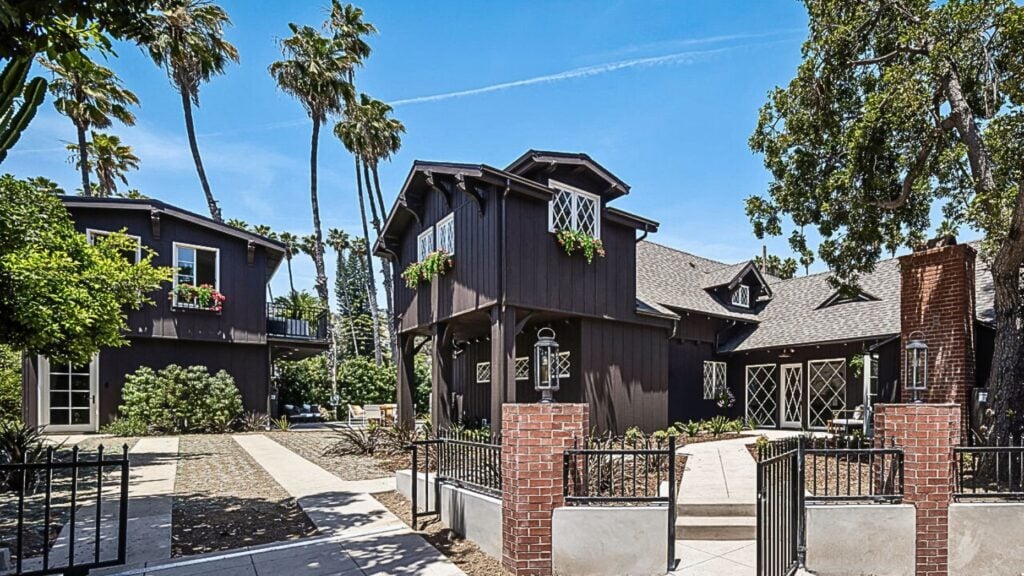Taking on the requirements and challenges of renovating and selling an historic home is not for the faint of heart, LA’s Craig Spano writes, but the rewards make it all worthwhile.
Whether it’s refining your business model, mastering new technologies, or discovering strategies to capitalize on the next market surge, Inman Connect New York will prepare you to take bold steps forward. The Next Chapter is about to begin. Be part of it. Join us and thousands of real estate leaders Jan. 22-24, 2025.
As an agent with Christie’s International Real Estate Southern California, my business partner, David Lubell, and I specialize in working with clients to renovate and sell homes in the Los Angeles area. One of our biggest recent challenges was renovating a historic home in the Sunset Square Tier 1 Historic Zone of Los Angeles: 1635 N. Genesee Avenue.
TAKE THE INMAN INTEL INDEX SURVEY FOR SEPTEMBER
Selling and renovating historic homes can be challenging, but it’s incredibly rewarding to breathe new life into these timeless properties. A skilled real estate agent understands the power of storytelling to connect with potential buyers — whether it’s the story of a home’s past, its heritage or the vision of what it could become. It’s the narrative that forges an emotional bond between a house and its future owner.
In a competitive market where every listing counts, taking on these unique properties can open new business opportunities.
Here’s some advice for anyone looking to succeed in this niche:
Look beyond the wood rot
The property at 1635 N. Genesee was originally built in 1908 as a horse stable, complete with a keeper’s house, for a family living nearby. This was at a time when much of Los Angeles was still orange groves and farmland.
By the time we started the project, the property was in disrepair. Much of the wood was rotted, the staircase was unsafe, the walls were bare studs and the house lacked a driveway — an unusual but critical need in Los Angeles. Fifty-year-old Ficus trees had outgrown their planters, pushing through the cement.
As a historic property, the house couldn’t simply be torn down. Every exterior change visible from the street required board approval, adding another layer of complexity to the project.
Reimagine the space
Renovating historic homes often means working within the constraints of the existing structure, but don’t be afraid to think creatively about the floor plan. Rooms in older properties are often quite similar and can be repurposed to meet modern needs.
In this house, what is now the primary bedroom was once the old kitchen, complete with a wood-burning grill that was preserved as a feature in the sitting room. The stunning architectural trussed ceiling in the primary bedroom is actually the exposed attic, and we maintained the attic window, now crowning the room.
The current kitchen, which opens to a newly designed pool and guest house, was formerly the primary bedroom. The living and dining area, once the main stable, had cement floors suitable for horses but not for people. We replaced them with oak plank hardwood, adding warmth and character to the space.

Patience is more than a virtue — it’s a necessity
When dealing with historic properties, patience is key. Review boards and city planning bureaucracies don’t move quickly, and clients must be prepared for multiple reviews and changes.
It’s essential to have a knowledgeable architect and team experienced with these types of renovations. Many historic preservation organizations can provide recommendations for professionals who understand the specific requirements and regulations, saving time and money in the long run.
Blending modern comfort with historic charm
Updating a floor plan or fixtures doesn’t mean sacrificing historic charm — the very element that likely drew your clients to the property. Look for ways to restore what you can, blending the old with the new in a cohesive way.
For instance, we restored the original exterior clapboard on the house and used it on the new guest house to maintain continuity. Many of the original windows, with their unique diamond-shaped panes, were carefully restored, and we replicated these details in the guest house to create a sense of timelessness.

Renovating and selling a historic property is not for the faint of heart. However, the process of transforming an “ugly duckling” into a swan is deeply gratifying — not just for clients but also for the broader community that appreciates these architectural treasures.
Craig Spano is an agent with Christie’s International Real Estate Southern California, and the Co-Owner of Craig and David Homes

